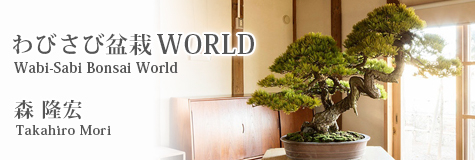
Vol. 9 A Visit to the Forest in Search of Nature's Beauty
I took a trip to Ozegahara in late September, reaching the famous, vast wetlands after climbing a mountain trail for around one hour in the crisp, clear air. There is a special sense of closeness to nature that comes from encounters with the many trees and plants that live there.
Autumn is the season for hiking in the mountains, and it is worth the effort to go and experience the beautiful multi-colored scenery of the autumn leaves and berries.
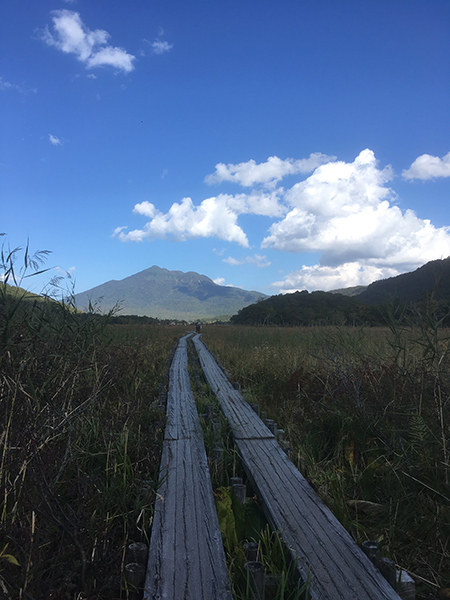
The vast wetlands are one of many must-see sights of Ozegahara.
For me, it is the face of untouched nature that brings me the most joy when compared with manmade creations like buildings, paintings, sculptures, and crafts. My heart is still filled with echoes of the bliss I felt when faced with beautiful vistas of nature, like the primeval forests of Yakushima, the snow-capped Swiss Alps, the sunset over the rocky desert of Morocco, and the moon over the Tibetan wilderness.
When immersed among the trees in a forest, one's eyes are captivated by the beauty of the lush undergrowth, the various berries and nuts peeking out of the foliage, the verdant leaves, and the supple branches. Another pleasure is to sense the pulse of the living forest from glimpses of the coexistence and competition among the diverse flora.
For those who make their career in bonsai, mountains and forests are places to learn about the different environments such as waterside areas and gravel beds, the various trees at different elevations, and environmental factors such as available sunlight or the amount of snowfall.
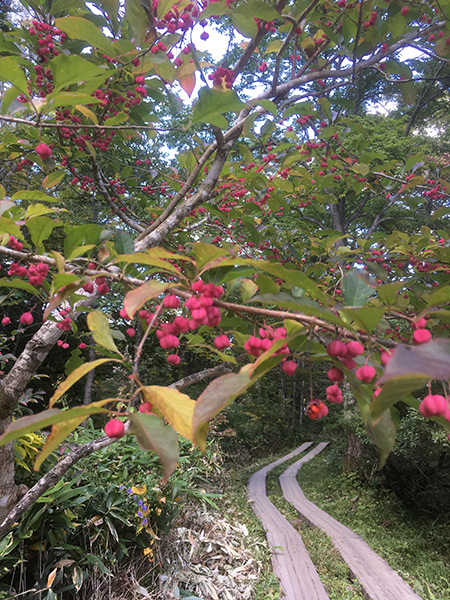
Euonymus oxyphyllus (Tsuribana Mayumi) encountered on the hiking trail. The red berries are particularly eye-catching.
The reason why bonsai gives such joy to the viewer is that they evoke a vision of natural scenery beyond what is apparent in any single manmade creation. This is why bonsai artists attempt to cultivate a sense of each bonsai existing within the natural world; imagining the climate conditions under which the tree would have grown is extremely important for doing this.
The front angle is selected to bring out inherent beauty as much as possible, with consideration for the aforementioned climate conditions and the unique character of the tree. Excess branches are then trimmed, and wires are used to arrange the others.
Even aficionados who have appreciated bonsai for many years need knowledge, experience, and skill to select the front view and choose the branches to keep.
These decisions must be made by considering numerous elements, such as the lay of the roots, the highlights of the trunk, the detailed balance of the trunk from roots to tip, and the position of the tip itself, so much time is spent in contemplation while turning the tree this way and that.
It is fascinating to observe the way that branches bend as they grow during a visit to the forest. In sloped areas, branches seem to compete with each other as they reach out from the tree, while they appear to droop from their base along the trunk in areas subject to heavy snowfall.
The life of plants is maintained by the process of photosynthesis in the leaves, so branches grow towards places where sunlight reaches. The tips of branches typically represent recent growth within the past several years, and may be relatively straight, but the curves of the branches become more pronounced as the branches thicken towards the trunk. Here the branches bend this way and that and are much thicker than at the tips.
Have you ever closely observed such branches?
Let us think about why branches came to bend in this way. The cause is deeply related to the environment in which the tree grows.
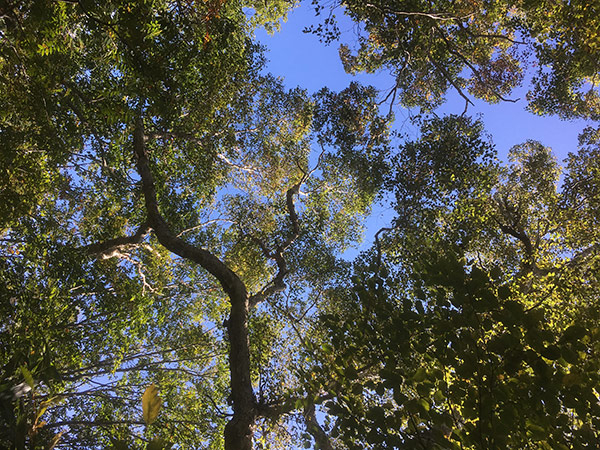
Have you ever really looked at a tree in its natural forest environment?
For example, consider the following conditions.
It is springtime. Sunlight gently sprinkles down here and there through the forest canopy. A slim branch still in need of foliage grows vigorously. However, if it continues to grow in a straight line it will fall under a shadow. The inadequate sunlight will cause the leaves to dry as water and nutrients are diverted to other branches. However, sensing there is sunlight available off at an angle, the branch splits and sends a bud growing towards that sunlight. In this way, the branches grow energetically in search of light, and those that fail to find it wither, in a process of natural selection.
However, further trials await the newly grown branch.
Winter arrives. Accumulated snow causes the branch to hang down from the trunk, where it waits heavily for the snow to melt. Spring eventually comes again. Dragged down by the heavy snow, the bent branch sends off new buds in search of the light.
As this process is repeated every year, the branch with its many angles and curves grows even thicker, splitting into new branches at the tip to collect more light and maintain the life of the tree.
The thick and crooked branches resulting from this growth process tell a story or history of many environmental elements, such as wind and snow, sunlight, disease, and pests.
Bonsai is a gateway to nature, as is nature a gateway to bonsai.
If one focuses only on creating the bonsai itself, it will not be as convincing as bonsai created with due consideration for nature.
About 12 years ago, I was given some important advice by a more experienced bonsai artist whom I greatly respected.
He said, "The trees you create are based only on your study of bonsai, and thus the trees themselves are without life. One does not get a sense of the wind or fog passing through the branches, or of a bird perching there to rest its wings. You must spread your imagination further outward."
In order to instill the work with greater depth, one must place themselves in the environment in which it would have grown, and experience the light, wind, and temperature.
Of course, this is easier said than done.
The development of entrenched habits through daily work is unavoidable, and one is wont to stick to the approach they are most used to.
When I find myself doing so, I head to the mountains and forests in search of a lesson, where I observe untouched nature and the beauty it creates in order to reestablish my direction.
Time spent working with bonsai is always filled with the magical call of the forest.
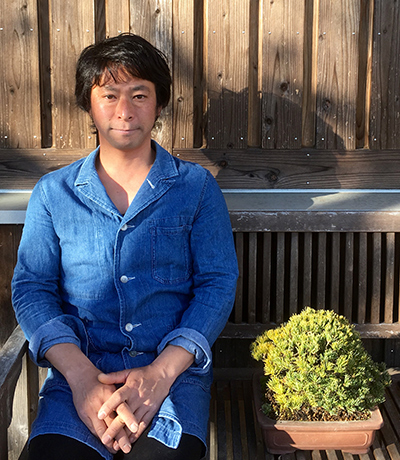 Takahiro Mori
Takahiro Mori
Bonsai master Takahiro Mori was born in Tokyo in 1979. After graduating from the College of Applied International Studies at Tokiwa University, in 2002 he began studying bonsai as an apprentice at Katsuta Koushouen, a bonsai garden in Ibaraki Prefecture. In 2006, he became independent and launched his own activities. In 2009, one of his works won the Kokufu Award at the Kokufu-ten Bonsai Exhibition, an event with a long and distinguished history. From 2009 to 2013, he worked as an in-house bonsai artist at the Omiya Bonsai Art Museum, Saitama. In 2013, he traveled to Kosice in Slovenia, the European Capital of Culture 2013, as a bonsai demonstrator, and participated as a representative of bonsai masters in the presentation for Saitama's bidding to host the 8th World Bonsai Convention, which will be held in 2017. Mori conducted demonstrations at Bonsai Slovakia 2014, and participated as a bonsai expert in the Japan Government exhibit at the EXPO 2016 Antalya International Horticultural Exposition held in Turkey in 2016. Today, in addition to his work as a bonsai master, Mori is actively engaged in initiatives to promote the art of bonsai in Japan and abroad through workshops for beginners that he conducts at his atelier Bonsai Mori established in 2013 and bonsai classes he organizes in California in the United States.
Bonsai Mori website:http://bonsaimori.jp/
Bonsai Mori Facebook: https://www.facebook.com/Bonsaimori/
Related Articles
Keywords
Back Issues
- 2022.7.27 Beyond Disasters - T…
- 2022.6.20 Beyond Disasters - T…
- 2021.6. 7 Contributed Article …
- 2021.4.28 Crossing Borders, En…
- 2021.4.27 Contributed Article …
- 2021.4.20 Contributed Article …
- 2021.3.29 Contributed Article …
- 2020.12.22 Interview with the R…
- 2020.12.21 Interview with the R…
- 2020.11.13 Interview with the R…

